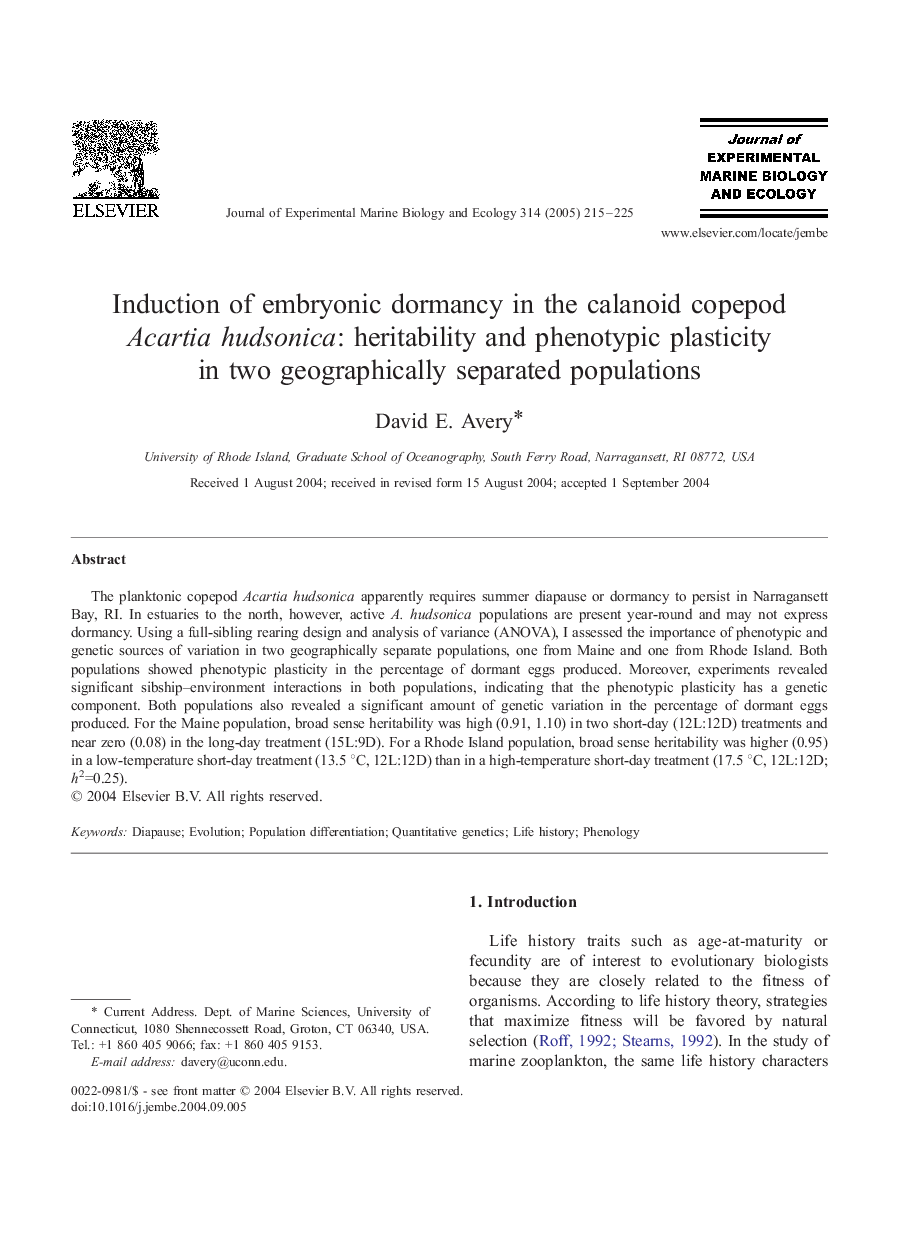| Article ID | Journal | Published Year | Pages | File Type |
|---|---|---|---|---|
| 9448872 | Journal of Experimental Marine Biology and Ecology | 2005 | 11 Pages |
Abstract
The planktonic copepod Acartia hudsonica apparently requires summer diapause or dormancy to persist in Narragansett Bay, RI. In estuaries to the north, however, active A. hudsonica populations are present year-round and may not express dormancy. Using a full-sibling rearing design and analysis of variance (ANOVA), I assessed the importance of phenotypic and genetic sources of variation in two geographically separate populations, one from Maine and one from Rhode Island. Both populations showed phenotypic plasticity in the percentage of dormant eggs produced. Moreover, experiments revealed significant sibship-environment interactions in both populations, indicating that the phenotypic plasticity has a genetic component. Both populations also revealed a significant amount of genetic variation in the percentage of dormant eggs produced. For the Maine population, broad sense heritability was high (0.91, 1.10) in two short-day (12L:12D) treatments and near zero (0.08) in the long-day treatment (15L:9D). For a Rhode Island population, broad sense heritability was higher (0.95) in a low-temperature short-day treatment (13.5 °C, 12L:12D) than in a high-temperature short-day treatment (17.5 °C, 12L:12D; h2=0.25).
Related Topics
Life Sciences
Agricultural and Biological Sciences
Aquatic Science
Authors
David E. Avery,
